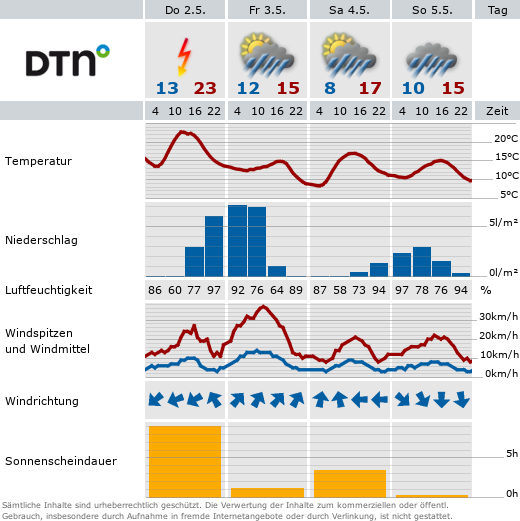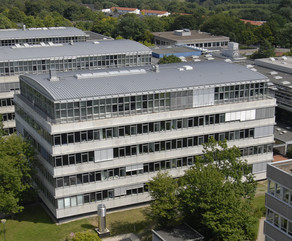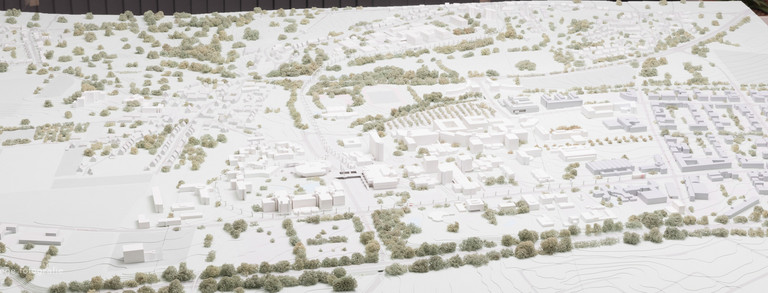F03 - Empowering Communities Through Green Infrastructure and Climate-Resilient River Planning in the Emscher region (Germany) and the Ravi River region (Pakistan)
Kommentar
Introduction:
River systems are vital components of both urban and peri-urban ecosystems, providing essential ecosystem services, including water regulation, biodiversity support, flood mitigation, and recreational opportunities. (1–4). However, rapid urbanisation and unbalanced anthropogenic pressures have led to the severe degradation of these rivers, threatening their ecological integrity and social functionality (5–8). In this context, Green Infrastructure (GI) and climate-resilient, participatory planning have emerged as integrative approaches for river restoration, emphasising long-term ecological health, inclusive governance, and sustainable urban development (9–12).
A pertinent case study in this regard is the Emscher River Restoration project in Germany's Ruhr Region. Historically, one of the most polluted rivers due to industrialisation, the Emscher functioned as an "open sewer" for over a century. Initiated in the late 20th century by the Emschergenossenschaft (Emscher Cooperative), the restoration project has transformed the river into a resilient ecological corridor through a unique combination of blue-green infrastructure, water quality improvement, and habitat restoration. Notably, the emphasis on multi-level governance, public participation, and educational outreach has made this project a successful case study for integrating environmental and social objectives (13–16).
In contrast, the Ravi River in Pakistan, particularly in the Lahore region, faces pressing ecological challenges due to uncontrolled urban sprawl, industrial waste, and untreated sewage discharge (17,18). In response to these challenges, the Government of Punjab has initiated the Ravi Riverfront Urban Development Project (RRUDP) under the Ravi Urban Development Authority (RUDA). This project aims to revitalise the riverfront through large-scale urban development, incorporating elements such as environmental rehabilitation, smart infrastructure, and the creation of green public spaces (19). However, critics argue that the initiative places too much emphasis on real estate-driven development compared to ecological restoration and inclusive community engagement (20). This has raised concerns about the project's long-term sustainability and its potential further to marginalise vulnerable ecosystems and communities along the riverbanks. This research study is designed to encourage a critical analysis of two contrasting cases, the Emscher and Ravi projects, focusing on Green Infrastructure, community empowerment, and climate resilience as guiding principles for sustainable river planning – particularly in the Global South. By examining the divergent trajectories of these projects, this study aims to develop inclusive and ecologically balanced river restoration strategies—especially in contexts like Pakistan—where aligning anthropocentric development with ecocentric sustainability remains a pressing challenge.
Problem Statement:
Urban rivers in the Global South, particularly in Pakistan, are experiencing significant environmental challenges due to pollution, encroachment, and unregulated development (17,18). The Ravi River exemplifies these issues. Although the RRUDP aims to promote "economic growth, environmental sustainability, and inclusive urbanisation" (19), it has predominantly adhered to a top-down planning model. Critics argue this model prioritises real estate ventures, while overlooking the ecological and social dimensions of river restoration. In contrast, the Emscher River Restoration Project can be cited as a model of integrated planning that emphasises multi- level governance, Green Infrastructure, and community participation. This project exemplifies how river restoration can align environmental goals with social inclusion and long-term climate resilience. This research study raises important comparative questions: How do these two models differ in their planning philosophy, governance structures, and outcomes? What can RRUDP (Pakistan) learn from the Emscher experience? This research aims to address these questions and contribute to more climate-resilient, inclusive, and community- oriented river restoration practices in Pakistan and similar contexts in the Global South. The Emscher project serves as a valuable learning resource, offering insights and strategies that can be adapted to meet the unique challenges of the Ravi River project, potentially reshaping and improving future river restoration practices.
Research Aims and Objectives:
This study aims to analyse and compare the Emscher River Restoration (Germany) and the Ravi Riverfront Urban Development Project (Pakistan) in terms of green infrastructure, participatory planning, and climate-resilient development.
Research Objectives:
- To assess the role of Green Infrastructure in enhancing ecological and climate resilience in both river restoration projects.
- To evaluate the level and impact of community participation in the planning and implementation process.
- To compare policy frameworks, governance structures, and planning tools applied in both case study projects.
- To formulate evidence-based and context-sensitive recommendations for sustainable river restoration in Pakistan, drawing on international best practices.
Student Learning Objectives:
Through this research project, students will develop a comprehensive understanding of green infrastructure, participatory planning, and climate-resilient river restoration. They will enhance their ability to critically analyse international and local case studies using qualitative and spatial techniques. The project will also strengthen students' interdisciplinary thinking, enabling them to formulate context-sensitive, evidence-based recommendations. Besides, they will gain valuable experience in international collaboration and comparative research within diverse socio-political and ecological settings.
Recommended Methodologies:
This study will employ a mixed-method approach that integrates qualitative and quantitative research techniques:
- a. Qualitative Methods
- Comparative Case Study Analysis: In-depth comparison of the Emscher and Ravi projects using planning documents, project reports, and academic literature.
- Semi-structured interviews: Engage with key stakeholders, including planners, government officials, NGOs, and community members in both regions, to gain a deeper understanding of their perspectives.
- Participatory Methods: Organise workshops, surveys, or focus group discussions—especially for the Ravi River project—to understand community perceptions of river restoration and public space design.
- b. Spatial and Visual Analysis
- GIS Mapping: To visualise land-use changes, flood-prone zones, and green infrastructure networks.
- Remote Sensing: To assess vegetation cover, urban encroachment, and changes in river morphology over time.
- c. Policy and Governance Analysis
- Review relevant policy documents and planning strategies from both projects, such as the Emschergenossenschaft's integrated plan and RUDA's RRUDP framework, with a focus on institutional roles, legal instruments, and implementation tools.
- d. Comparative Framework Development: Design a conceptual framework to assess both river projects based on shared variables such as:
- Integration of Green Infrastructure.
- Extent and nature of community engagement.
- Environmental transformation.
- Climate resilience potential.
The aim is to extract transferable lessons and generate practical, context-specific recommendations for river restoration in Pakistan.
Note on Field Visit:
Subject to available funding, the project team leader will explore opportunities for a field visit to the Ravi River project area in Punjab, Pakistan. This would enable primary data collection, stakeholder interviews, and on-site observations, thereby enriching the comparative analysis.
| Veranstaltungsnr. | 0910303 |
| Veranstaltnugs SWS | 8 |
| Maximale Teilnehmerzahl | 12 |
| Studiengänge | B.Sc. Raumplanung, 5-6 Semester |
| Personen |
| Dienstags | Freitags | Intensivwoche |
| 14:00-18:00 Uhr | 14:00-18:00 Uhr | 08:00-18:00 Uhr |
| 21.10.2025-03.02.2026 | 17.10.2025-06.02.2026 | 17.11.-21.11.2025 |
| Ausfalltermine: 18.11.2025 | Ausfalltermine: 21.11.2025 | |
| Raum 3.401 | Raum 3.401 |
- MEA. Millennium ecosystem assessment (2005). Ecosystems and Human Well-Being. Synthesis. In World Health.
- Gupta, A.K., Singh, S., Wajih, S.A., Mani, N. and Singh, A.K., 2017. Urban resilience and sustainability through peri-urban ecosystems: integrating climate change adaptation and disaster risk reduction. Gorakhpur Environmental Action Group, Gorakhpur (UP) India, 14, pp.5-28.
- S, Kondolf GM, Lake PS, Lave R, Meyer JL, O'donnell TK, Pagano L, Powell B, Sudduth E (2005) Ecology - Synthesising US river restoration efforts. Science 308(5722):636- 637
- Rayan, M. (2024). Green infrastructure planning framework: An exploratory study towards resilient cities in Khyber Pakhtunkhwa (KP.) province, Pakistan (Doctoral dissertation, Dissertation, Dortmund, Technische Universität, 2024).http://dx.doi.org/10.17877/DE290R-24285
- Walsh CJ, Roy AH, Feminella JW, Cottingham PD, Groffman PM, Morgan RP (2005) The urban stream syndrome: current knowledge and the search for a cure. Journal of the North American Benthological Society 24(3):706-723
- Wantzen KM, Ballouche A, Longuet I, Bao I, Bocoum H, Cissé L, Chauhan M, Girard P, Gopal B, Kane A, Marchese MR, Nautiyal P, Teixeira P, Zalewski M (2016) River Culture: An ecosocial approach to mitigate the biological and cultural diversity crisis in riverscapes. Ecohydrology & Hydrobiology 16(1):7-18
- Kondolf GM, Pinto PJ (2016) The social connectivity of urban rivers. Geomorphology 277:182-196
- Eu (2000) Directive 2000/60/EC of the European Parliament and of the Council of 23 October2000 establishing a framework for Community action in the field of water policy Pages 1–73. Official Journal (OJ L 327)http://data.europa.eu/eli/dir/2000/60/oj
- United Nations Environment Programme (2021). Guidelines for Integrating Ecosystem-based Adaptation into National Adaptation Plans: Supplement to the UNFCCC NAP Technical Guidelines. Nairobi.https://unfccc.int/sites/default/files/resource/EbA_NAP.pdf.
- IPCC, 2022: Summary for Policymakers [H.-O. Pörtner, D.C. Roberts, E.S. Poloczanska, K. Mintenbeck, M. Tignor, A. Alegría, M. Craig, S. Langsdorf, S. Löschke, V. Möller, A. Okem (eds.)]. In: Climate Change 2022: Impacts, Adaptation and Vulnerability. Contribution of Working Group II to the Sixth Assessment Report of the Intergovernmental Panel on Climate Change [H.-O. Pörtner, D.C. Roberts, M. Tignor, E.S. Poloczanska, K. Mintenbeck, A. Alegría, M. Craig, S. Langsdorf, S. Löschke, V. Möller, A. Okem, B. Rama (eds.)]. Cambridge University Press, Cambridge, UK and New York, NY, USA, pp. 3–33, doi:10.1017/9781009325844.001.
- Rayan, M., Gruehn, D. and Khayyam, U. (2022): Planning for Sustainable Green Urbanism: An Empirical Bottom-Up (Community-Led) Perspective on Green Infrastructure (GI) Indicators in Khyber Pakhtunkhwa (KP), Pakistan. International Journal of Environmental Research and Public Health 19, no. 19: 11844.https://doi.org/10.3390/ijerph191911844.
- European Commission. (2015). Ecosystem-based Adaptation: A New Approach to Climate Change. Brussels: European Commission. Available at:https://ec.europa.eu/environment/nature/climatechange/adaptation/ecosystem-based/index_en.html
- Emscher landscape park programme (2021). Emschergenossenschaft. Available at: una.city/nbs/essen/emscher-landscape-park-programme (Accessed: Jan 01, 2025).
- Restoration of the Emscher River (2021) Emschergenossenschaft. Available at:https://una.city/nbs/essen/restoration-emscher-river(Accessed: Jan 01, 2025).
- EU Mission, Adaptation to Climate change (2024) The Emscher Restoration: A Contribution to Climate Adaptation, A New River Basin for a Blue-Green Future. Available at:https://climate-adapt.eea.europa.eu/en/mission/solutions/mission-stories/the-emscher-restoration-story19(Accessed: Jan 01, 2025).
- Perini, K. (2017). Emscher River, Germany–Strategies and Techniques. Urban Sustainability and River Restoration: Green and Blue Infrastructure, 151-159.
- Asia Development Bank (2021). Pakistan: Revitalising the Ecosystem of Ravi River Basin.Available at: //www.adb.org/sites/default/files/project-documents/51324/51324-001-tcr-en.pdf(Accessed: July 07, 2025).
- Asia Development Bank (2020). Pakistan's River Ravi Eco-Revitalization Master Plan: A Road Map to Rescue and Revitalise the River Ravi and Its Tributaries. Manila. Available at:https://www.adb.org/sites/default/files/publication/663441/pakistan-river-ravi-eco-revitalization-master-plan.pdf(Accessed: July 07, 2025).
- The Ravi Urban Development Project – A Vision for Lahore's Future. Available at:https://ruda.gov.pk/ruda-vision(Accessed: July 07, 2025).
- Shehreen Umair (2025) Lahore's urban disaster: From colonial sprawl to capitalist chaos. Available at:https://www.dawn.com/news/1892744(Accessed: July 07, 2025)
B.Sc. SP (2019) : Successful completion of modules 1, 2, 9, and 12 (to be proven by the time of submission of academic achievement A).
| Prüfung | Modulprüfung (unbenotet), 2 Studienleistungen (unbenotet) |
| Prüfungsform | Abschlussbericht inkl. Disputation |
| Studienleistun |
|








